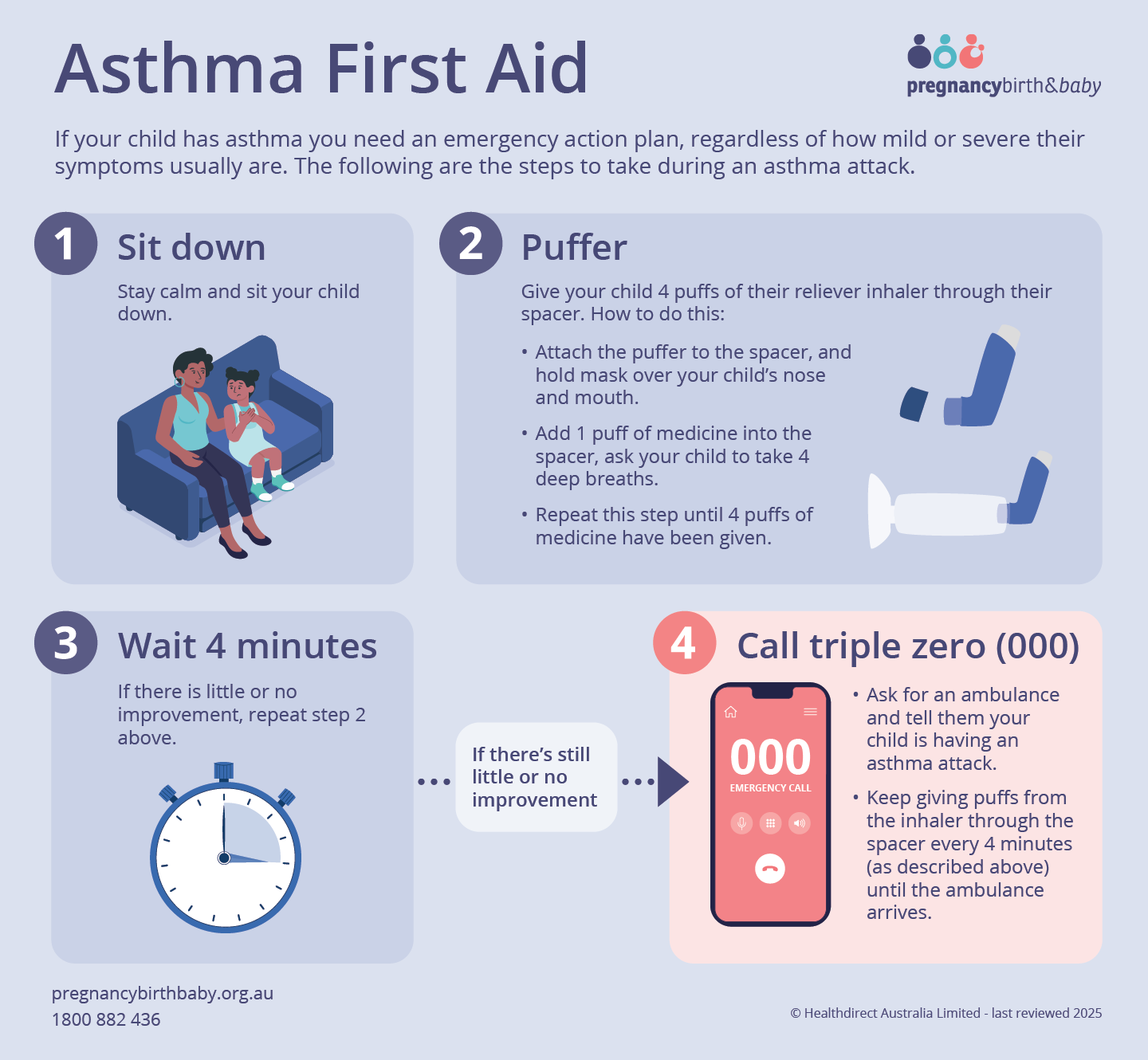Asthma first aid guide
2-minute read

View text version of infographic
Asthma First Aid
If your child has asthma you need an emergency action plan, regardless of how mild or severe their symptoms usually are. The following are the steps to take during an asthma attack.
1. Sit down
Stay calm and sit your child down.
2. Puffer
Give your child 4 puffs of their reliever inhaler through their spacer. How to do this:
- Attach the puffer to the spacer, and hold mask over your child’s nose and mouth.
- Add 1 puff of medicine into the spacer, ask your child to take 4 deep breaths.
- Repeat this step until 4 puffs of medicine have been given.
3. Wait 4 minutes
If there is little or no improvement, repeat step 2 above.
If there’s still little or no improvement, go to step 4.
4. Call triple zero (000)
- Ask for an ambulance and tell them your child is having an asthma attack.
- Keep giving puffs from the inhaler through the spacer every 4 minutes (as described above) until the ambulance arrives.
Want more like this?
See more guides and infographics from Pregnancy, Birth and Baby.
Learn more here about the development and quality assurance of healthdirect content.
Last reviewed: March 2025

